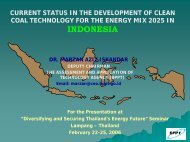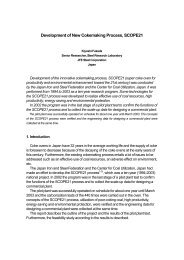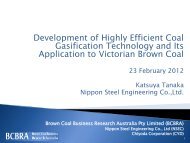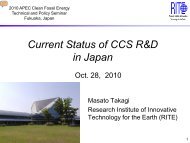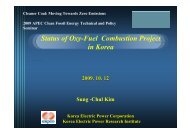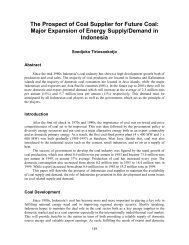Defining CCS Ready: An Approach to An International Definition
Defining CCS Ready: An Approach to An International Definition
Defining CCS Ready: An Approach to An International Definition
- No tags were found...
Create successful ePaper yourself
Turn your PDF publications into a flip-book with our unique Google optimized e-Paper software.
Chapter 4: S<strong>to</strong>rage <strong>Ready</strong> Plant <strong>Definition</strong>4.4.5 Maintaining S<strong>to</strong>rage ReadinessAs mentioned in section 2.4.5, regular assessments of <strong>CCS</strong> <strong>Ready</strong> status is important <strong>to</strong>adapt projects <strong>to</strong> foreseeable changes such as new technical developments, additional costs,and delays. For a s<strong>to</strong>rage site, such periodic assessments can help in identifying andpotentially resolving issues such new regula<strong>to</strong>ry developments, land development changes,additional information about selected sites, and changes in moni<strong>to</strong>ring or injectiontechnologies. Since site characterization and development take significant time (2 – 12 years)and effort, it is important <strong>to</strong> maintain the ability <strong>to</strong> deploy <strong>CCS</strong> as soon as possible whenmandated or when technology permits.In order <strong>to</strong> maintain the s<strong>to</strong>rage readiness status, project developers can consider thefollowing issues:• New regulations that either enhance or decrease the potential for s<strong>to</strong>rage in theselected s<strong>to</strong>rage sites;• Changes <strong>to</strong> land ownership, land development, or mineral extraction activities that mayprevent use of the identified potential s<strong>to</strong>rage sites;• Assessment of geological characteristics of the selected site changes due <strong>to</strong> newlyavailable site-specific information, or developments in moni<strong>to</strong>ring and verificationtechnologies or practices; 115• Other CO 2 s<strong>to</strong>rage plans or developments in the same region that affect thesequestration potential of the identified reservoir. In some cases, the potential ofpreviously identified alternative sites may have <strong>to</strong> be assessed;• More viable s<strong>to</strong>rage sites are identified;• S<strong>to</strong>rage plans are reassessed based on any changes <strong>to</strong> capture and transportcomponents (e.g., if a greater amount of CO 2 will be captured than was originallyplanned)• Changes in environmental or safety regulations that interfere with plans <strong>to</strong> s<strong>to</strong>re CO 2 ;• New approvals or permits for maintenance of s<strong>to</strong>rage readiness are obtained orrenewed as necessary; and• Public engagement continues and concerns of the community regarding long-term CO 2sequestration are addressed.Section 2.4.5 includes a more detailed discussion on moni<strong>to</strong>ring and recordkeepingregulations, potential requirements <strong>to</strong> maintain <strong>CCS</strong> readiness, and submitting periodicreports confirming readiness.115 For example, page 16, paragraph 36 of the UK CCR Guidance notes that the “Government recognises that, as a greateramount of information becomes available on the nature and characteristics of the UK’s s<strong>to</strong>rage capacity, opera<strong>to</strong>rs will as amatter of course review and refine their initial assessments.” See: U.K. Department of Energy and Climate Change (U.K.DECC). (2009a). Carbon capture readiness (CCR): A guidance note for Section 36 Electricity Act 1989 consent applications(Publication no. URN 09D/810). London, UK: Author.23 February 2010 66



